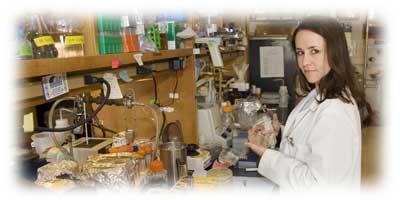 |
|||||||||||||||||
|
|||||||||||||||||
|
Joung Lab
The Cys2His2 zinc finger is the most commonly encoded domain in genomes ranging from yeast to humans. The zinc finger can be used as a scaffold for engineering proteins with customized DNA-binding specificities. These artificial “designer” zinc finger domains can be used to alter the sequence and/or expression level of specific genomic loci in yeast, Drosophila, C. elegans, zebrafish, plants, and mammalian cells. For many years, a bottleneck in the more widespread application of designer zinc fingers has been the lack of access to a robust method for re-engineering the DNA-binding specificities of this domain. The Joung lab has recently developed an effective and publicly available method for creating artificial zinc finger domains that we have named OPEN (for Oligomerized Pool ENgineering). We have used this method to engineer zinc finger proteins for over 160 different target DNA sequences. In addition, OPEN zinc finger domains have been used to perform highly efficient targeted modification of endogenous gene sequences in zebrafish and plants and in human somatic, ES, and iPS cells. Current areas of emphasis for the lab include:
|
|||||||||||||||||
|
|
|||||||||||||||||
| Copyright © 2006-2012 The Massachusetts General Hospital | |||

